長く続いた狩猟採集の時代、縄文。人々が自然の恵みと共に穏やかに暮らしていた日本列島に、ある日、革命的な変化が訪れます。それが、大陸から伝わった「稲作」の技術でした。これは単に新しい食べ物がメニューに加わったという話ではありません。米作りは、人々の暮らし、社会の仕組み、そして価値観そのものを根底から覆し、やがて「国」という形へとつながる大きなうねりを生み出したのです。
- 食料から「富」へ:社会構造を根底から変えた米の価値
- 定住と格差社会の始まり:環濠集落が物語る光と影
- 争いの時代から「クニ」の誕生へ:日本国家の原風景
静かなる革命の始まり
およそ3000年前(紀元前10世紀頃)、日本列島、特に北九州地方に新しい文化の波が押し寄せました。その中核をなしたのが、水田で行う稲作の技術です。この技術は、中国の長江流域から朝鮮半島を経由、あるいは東シナ海を渡って直接伝わったと考えられています。これまでの、木の実を拾い、動物を狩る生活から、土地を耕し、作物を育て、収穫するという計画的な食料生産の時代、「弥生時代」の幕開けでした。
縄文土器よりも薄手で硬く、シンプルなデザインの弥生土器が作られ始め、米の調理や貯蔵に使われました。さらに、大陸からは金属器も伝わります。農具や工具として使われた鉄器と、祭祀の道具や有力者の権威の象徴とされた青銅器。これらの新しい技術が、稲作と共に社会を大きく変えていく原動力となったのです。
豊かさが生んだ新しい暮らしの形
稲作の最大のインパクトは、食料を計画的に生産し、備蓄できるようになったことでした。安定した食料は人口の増加を支え、人々は稲作に不可欠な水田の近くに永住する「定住生活」を本格化させます。
ムラ(集落)の風景も一変しました。収穫した米を湿気やネズミから守るため、床を高くした高床倉庫が建てられます。これは、単なる食料庫ではありません。ムラの「富」の象徴でもありました。人々は力を合わせ、水路を整備し、田畑を切り開いていきました。共同での農作業は、集団の結束力を高める一方で、生活の中に新たな秩序を生み出していったのです。
考えてみてください。 もし明日食べるものが確実にあると分かったら、あなたの行動はどう変わるでしょうか? 弥生時代の人々にとって、稲作はまさにそのような安心感と、未来への計画性をもたらすものでした。
光が落とした影と争いの時代
しかし、この豊かさは、新たな火種を生むことになります。余剰生産物、つまり「蓄えられた富」としての米は、それを持つ者と持たざる者の間に格差を生み出しました。また、稲作に欠かせない水や、より良い土地をめぐって、ムラとムラの間で争いが頻発するようになります。
その緊張の高まりを物語るのが、佐賀県の吉野ヶ里遺跡に代表される環濠集落の出現です。ムラの周りに深い濠(ほり)や土塁(どるい)をめぐらせ、物見やぐらを立てる。これは明らかに、外敵からの侵略に備えた防御施設です。また、戦いで傷ついた人骨や、武器としての石鏃(せきぞく)、青銅製の武器なども各地で見つかっており、弥生時代が平和なだけではなかったことを示しています。
「クニ」の誕生へ
集団同士の争いが激しくなる中で、人々はより強力なリーダーを求めるようになります。戦いを指揮し、ムラを守り、富を管理する指導者、すなわち「首長」の誕生です。
力のある首長は、やがて周辺の小さなムラをまとめ上げ、より大きな政治的なまとまりである**「クニ」**を形成していきます。中国の歴史書『魏志』倭人伝には、当時の日本列島に100あまりのクニがあったと記されています。稲作がもたらした豊かさと争いの中から、日本の国家の原型が産声を上げたのです。弥生時代は、私たちが知る「日本」という国の、まさに原風景が形作られた時代だったと言えるでしょう。
解説ポイント①:食料から「富」へ:社会構造を根底から変えた米の価値
縄文時代の食料(木の実や獲物)は、その場で消費されるか、簡単な加工しかできず、長期保存が困難でした。しかし、米は乾燥させることで長期間の保存が可能です。これは「食料の備蓄」という概念を生み、人々を飢えの恐怖から解放しました。さらに重要なのは、米作りには水路の管理や田植え、収穫など、集団での計画的な共同作業が不可欠だったことです。この共同作業がムラの結束を強めた一方で、「余った米」は個人の、あるいはムラの「財産」となり、後の社会における経済や権力の基盤となっていきました。
解説ポイント②:定住と格差社会の始まり:環濠集落が物語る光と影
環濠集落は、弥生時代の社会を象徴する遺跡です。深い濠と高い土塁は、単にイノシシなどから作物を守るためだけのものではありません。その規模と構造から、人間同士の本格的な争いがあったことを示しています。ムラの中心部には、首長が住む特別な区画や、米を蓄えた高床倉庫群があり、外側には一般の人々が住むというように、集落内に身分の差が生まれ始めていたことも分かっています。豊かさを守るための「壁」が、同時に社会の中に「格差」という見えない壁をも作り出してしまったのです。
解説ポイント③:争いの時代から「クニ」の誕生へ:日本国家の原風景
弥生時代の中期から後期にかけては、中国の歴史書に「倭国大いに乱る」と記されるほどの争乱の時代でした。この争いを勝ち抜き、生き残るために、小さなムラは連合し、より大きな集団を形成していきます。その中で、軍事的な指導力や、豊作をもたらす祭祀を司る能力を持つ人物が首長として力をつけ、やがて「王」と呼ばれるような存在になっていきました。武器や美しい玉で飾られた首長の墓は、彼らが特別な権威を持っていたことを示しています。この**「クニ」同士の攻防と連合**の先に、やがて邪馬台国に代表されるような、より広域な政治連合が誕生することになります。
参考文献
- 文化庁 – 「弥生時代ってどんな時代?」
- NHK for School – 「米作りがもたらした社会の変化」
- 農林水産省 – 「米の歴史」
- 吉野ヶ里歴史公園 – 「弥生時代について」
【English Article】
A 3,000-Year-Old Social Revolution: Why Did Japan Choose Rice? The Agricultural Foundation of a Nation
After the long-lasting Jomon period of hunting and gathering, a revolutionary change swept across the Japanese archipelago. This was the introduction of rice cultivation technology from the continent. It wasn’t just about adding a new food to the menu. Rice farming fundamentally overturned people’s lifestyles, social structures, and even their values, creating a major swell that would eventually lead to the formation of a “state.”
- From Food to “Wealth”: The value of rice that fundamentally changed social structures.
- The Dawn of Sedentary Life and a Stratified Society: The light and shadow told by moated settlements.
- From an Era of Conflict to the Birth of “Kuni”: The primordial landscape of the Japanese nation.
The Beginning of a Quiet Revolution
Approximately 3,000 years ago (around the 10th century BCE), a new cultural wave washed over the Japanese archipelago, particularly in the northern Kyushu region. At its core was the technology of wet-rice (paddy field) cultivation. This technique is believed to have been transmitted from the Yangtze River basin in China, either via the Korean Peninsula or directly across the East China Sea. This marked the dawn of the “Yayoi period,” a shift from a life of gathering nuts and hunting animals to an era of planned food production through tilling the land, growing crops, and harvesting.
Yayoi pottery, thinner, harder, and more simply designed than Jomon pottery, began to be produced and was used for cooking and storing rice. Furthermore, metal tools were also introduced from the continent. Ironware, used for farming tools and implements, and bronze-ware, used for ritual objects and as symbols of the authority of the powerful, became the driving forces that, along with rice cultivation, would drastically change society.
A New Way of Life Born from Abundance
The greatest impact of rice cultivation was the ability to produce and store food systematically. A stable food supply supported population growth, and people began to lead fully sedentary lives, settling permanently near the paddy fields essential for rice farming.
The landscape of the villages (settlements) also changed dramatically. To protect harvested rice from moisture and pests, storehouses on stilts (takayuka soko) were built. These were not mere granaries; they were symbols of the village’s “wealth.” People worked together to develop irrigation channels and clear new fields. While this communal farm work strengthened group solidarity, it also created a new order within their lives.
Just think about it. If you knew for certain that you had food for tomorrow, how would your actions change? For the people of the Yayoi period, rice cultivation brought exactly that sense of security and the ability to plan for the future.
The Shadow Cast by Light and an Era of Conflict
However, this prosperity also gave rise to new sources of conflict. Surplus produce, in other words, rice as “accumulated wealth,” created disparities between those who had it and those who did not. Furthermore, disputes over water rights and better land, essential for rice cultivation, began to occur frequently between villages.
The emergence of moated settlements (kangō shūraku), typified by the Yoshinogari site in Saga Prefecture, tells the story of this rising tension. Surrounding a village with deep moats and earthen ramparts and erecting watchtowers were clearly defensive measures against invasion from outsiders. Additionally, human bones showing signs of injury from battle and weapons such as stone arrowheads and bronze arms have been found in various locations, indicating that the Yayoi period was not entirely peaceful.
Towards the Birth of “Kuni”
As conflicts between groups intensified, people began to seek more powerful leaders. This led to the emergence of “chiefs” (shuchō), leaders who commanded battles, protected the village, and managed its wealth.
Powerful chiefs eventually consolidated smaller surrounding villages, forming larger political units known as “kuni” (small states or provinces). The Chinese historical text, the “Wajinden” (Records of Wei), records that there were over 100 kuni in the Japanese archipelago at the time. From the abundance and conflict brought about by rice cultivation, the prototype of the Japanese state was born. The Yayoi period can be described as the era when the very primordial landscape of the country we know as “Japan” was formed.
Analysis Point ①: From Food to “Wealth”: The Value of Rice that Fundamentally Changed Social Structures
Food in the Jomon period (nuts and game) was either consumed on the spot or could only be simply processed, making long-term storage difficult. However, rice, by being dried, could be stored for long periods. This created the concept of “food stockpiling” and freed people from the fear of starvation. More importantly, rice cultivation required planned, communal work for tasks like managing irrigation, planting, and harvesting. While this cooperative labor strengthened village unity, the “surplus rice” became the “property” of individuals or the village, forming the basis for the economy and power in the subsequent society.
Analysis Point ②: The Dawn of Sedentary Life and a Stratified Society: The Light and Shadow Told by Moated Settlements
Moated settlements are symbolic ruins of Yayoi society. The deep moats and high ramparts were not just for protecting crops from wild boars. Their scale and structure indicate that full-fledged conflict between humans existed. Within the village, it is understood that social stratification had begun to emerge, with special sections for the chief’s residence and storehouse complexes for rice in the center, and areas for the general populace on the outskirts. The “walls” built to protect wealth simultaneously created invisible walls of “disparity” within society.
Analysis Point ③: From an Era of Conflict to the Birth of “Kuni”: The Primordial Landscape of the Japanese Nation
The middle to late Yayoi period was an era of such turmoil that it was described in Chinese historical texts as a time of “great civil war in Wa (Japan).” To survive and win these conflicts, small villages allied to form larger groups. Within these groups, individuals with military leadership skills or the ability to preside over rituals for a good harvest gained power as chiefs, eventually becoming figures akin to “kings.” The tombs of chiefs, adorned with weapons and beautiful jewels, show that they possessed special authority. It was through this cycle of conflict and alliance among the “kuni” that a broader political federation, represented by entities like Yamatai, would eventually be born.
References
- Agency for Cultural Affairs, Government of Japan – “What kind of era was the Yayoi period?”
- NHK for School – “Social Changes Brought by Rice Farming” (Japanese)
- Ministry of Agriculture, Forestry and Fisheries – “History of Rice” (Japanese)
- Yoshinogari Historical Park – “About the Yayoi Period”


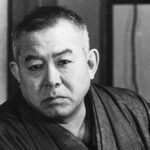
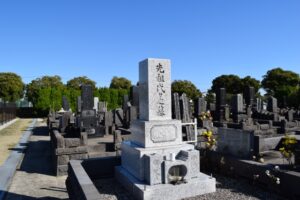
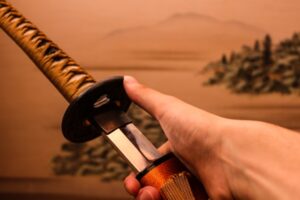
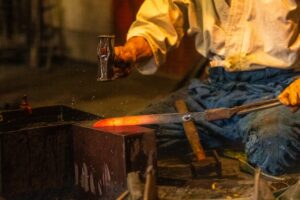
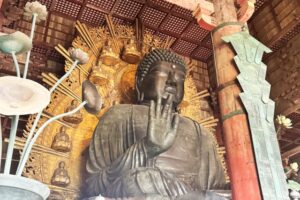

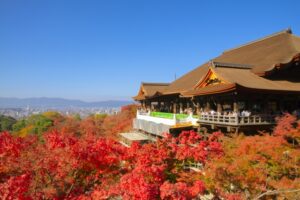
コメントを残す